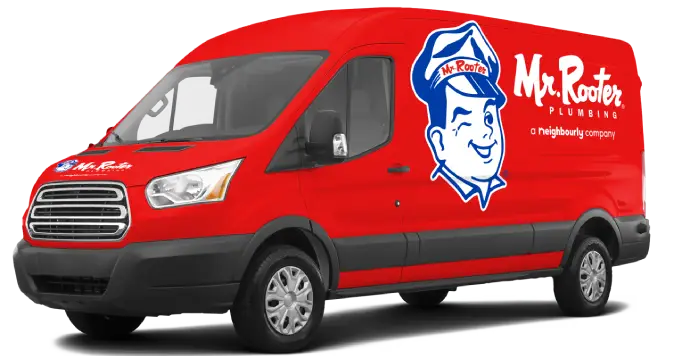You turn on the tap. Water flows. You don’t think twice. But behind every flush, rinse, or shower is a hidden network of pipes that keep your home running. In this guide, we’ll take a beginner-friendly look at your plumbing system—what comes through your pipes, where it all goes, and why a little understanding can go a long way in protecting your home.
|
Learn how your home’s plumbing system works. From bringing fresh water from pipe to tap and removing waste via efficient drainage, see how every plumbing line plays its part. |
Mr. Rooter provides a comprehensive guide on home plumbing systems, including terms, functionality, and troubleshooting.
|
Your Home Plumbing System at a Glance
Think of your plumbing system as a two-way street: Clean water flows in, used water flows out. One system brings the good stuff while the other gets rid of the mess.
These subsystems are called the water supply and the drainage plumbing:
- The water supply system utilizes pressurized plumbing lines to deliver clean water to your taps, appliances, and fixtures.
- The drainage plumbing system relies on gravity to remove wastewater, which is then sent to the city sewer or a septic tank.
It sounds simple enough, but there’s more action behind the scenes than you might think. Understanding the basics can help you spot small issues early and keep your home running smoothly.
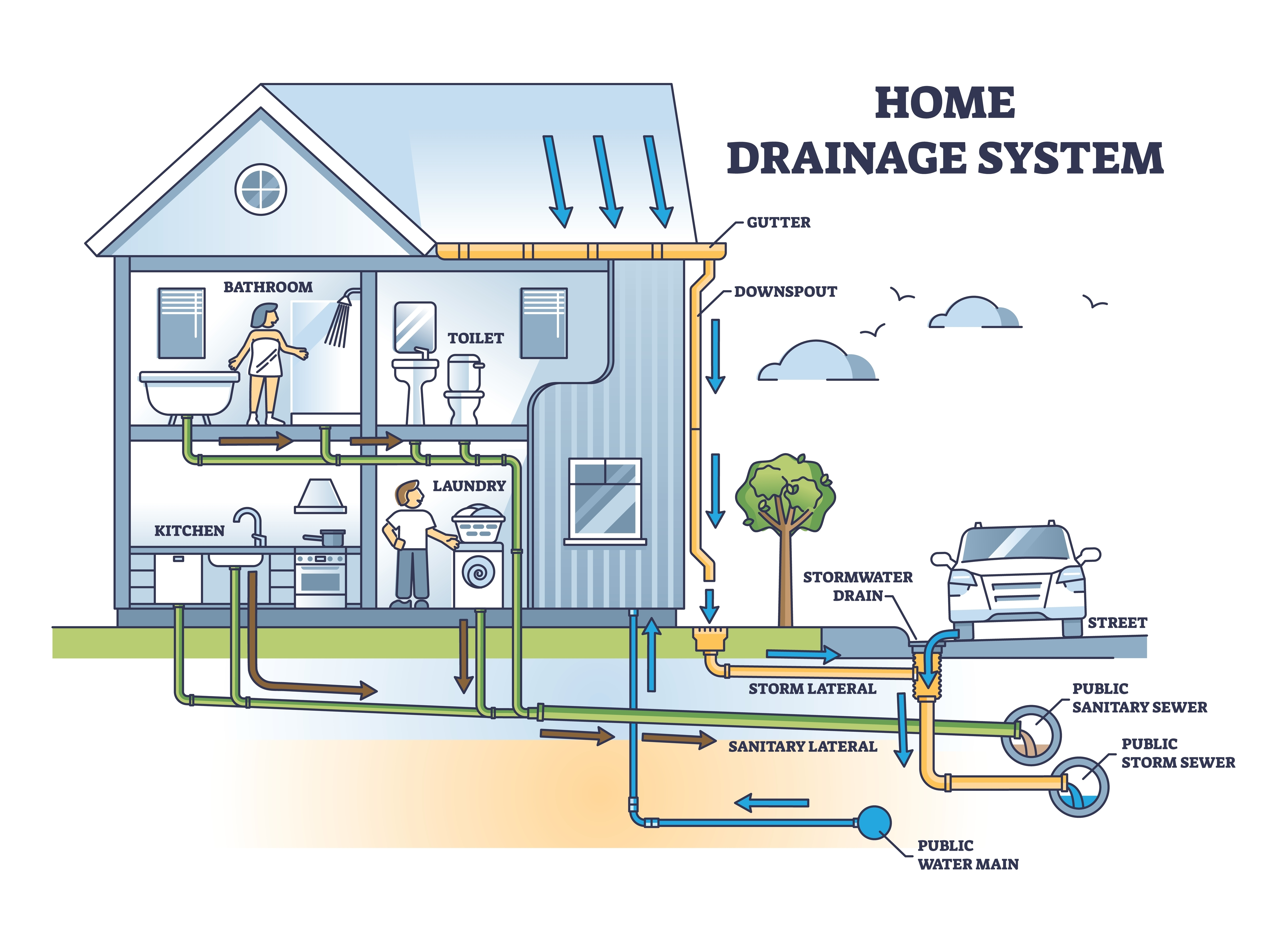
Plumbing Terms to Know + Visual Diagram
Before we dive deeper, here are a few key plumbing terms that’ll help everything make more sense:
- Plumbing system: The complete network of pipes, fixtures, and valves that moves water into and out of your home.
- Plumbing line: An individual pipe that supplies water to or drains water from a specific fixture or appliance.
- Water supply line: Pressurized pipes that carry clean water from pipes to your taps, toilets, showers, and appliances.
- Drainage plumbing: Pipes that remove used water and waste through gravity. Also called drain-waste-vent (DWV) systems.
- Shutoff valve: A valve that controls water flow to a specific fixture or your entire home—important for emergencies or maintenance. See photo below.
- P-trap: The curved pipe beneath sinks and tubs that holds water to block sewer gases from entering your home. See photo below.
- Vent pipe: A vertical pipe that allows air into the drainage plumbing system so wastewater flows properly.
- Main line: The largest pipe in your plumbing system, connecting your home to the municipal water supply or septic system.
All together, these parts form the backbone of how plumbing works inside your home.
Want a real-world look? Here’s a photo showing several of these parts working together under a typical bathroom sink.
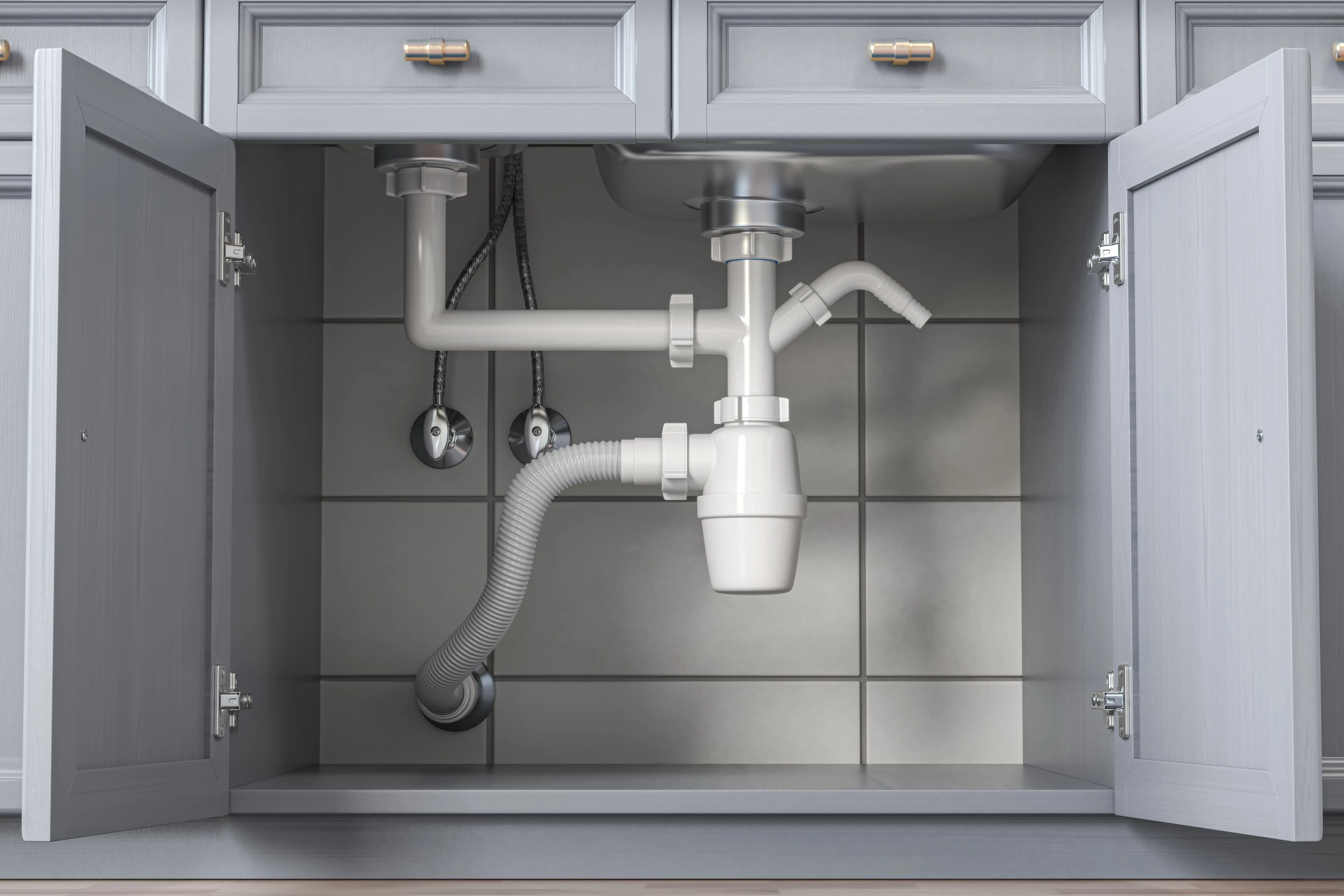
The Water Supply System: Where Does Your Water Come From?
In most Canadian homes, clean water from pipes comes from one of two sources: a municipal water supply or a private well.
If you're on a municipal system, water is sourced, treated, and pressurized by the city before it enters your home through the main plumbing line, also called the water main. If you rely on a well, water is pumped from underground and stored under pressure in a tank.
Either way, the water flows through a network of plumbing lines that branch off to your taps, toilets, showers, and appliances.
Inside the plumbing line: From source to fixture
Once water reaches your home, your plumbing system takes over, directing it exactly where it’s needed. Clean water from the pipe splits into smaller branch lines that supply your sinks, toilets, showers, and appliances.
These plumbing lines remain under pressure, allowing water to flow on demand. In most homes, water pressure is managed by the municipal supply or a private well pump, but it may also be regulated by a pressure-reducing valve (PRV) inside your home.
Along the way, your system may include:
- Shutoff valves: Allow you to cut off the flow to a specific faucet or fixture during repairs or emergencies
- Backflow preventers: Prevent contaminated water from reversing into the clean supply
- Water meters or gauges: Track flow and identify unusual usage
When water pressure drops or flow becomes uneven, the issue often starts somewhere in the plumbing lines. Understanding how the system works helps homeowners spot early warning signs—and know when it’s time to call a professional.
What comes through pipes (besides water)?
When you turn on a tap, it’s easy to assume you’re getting clean water—and nothing else. However, depending on your water source, the age of your pipes, and your location, other materials can travel through your plumbing system, too.
Here are the most common:
- Minerals: Calcium and magnesium are commonly found in many Canadian water sources, particularly in areas with hard water. They’re safe to drink but can cause scaly buildup on fixtures, reducing appliance efficiency.
- Sediment: Small particles like sand, rust, or grit may come from aging pipes or municipal lines, especially after repairs or pressure changes.
- Air: Air bubbles in your plumbing lines can lead to sputtering taps or noisy pipes. This usually happens after service disruptions or cold-weather shifts.
- Treatment additives: Municipal water systems often use chlorine or chloramine to disinfect water. These chemicals are safely diluted in public water, but they can affect taste or odour.
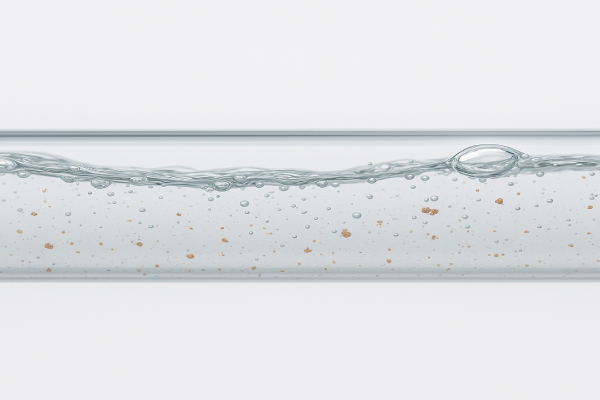
While these particles are rarely harmful, they can change how your water looks, tastes, or flows. Filters, softeners, or regular maintenance by a plumbing professional can help protect your plumbing system and improve water quality over time.
The Drainage Plumbing System: How Wastewater Leaves the Home
After you wash your hands, flush the toilet, or run a load of laundry, that used water becomes wastewater. That’s when your drainage plumbing system takes over. And unlike the pressurized system that provides clean water from pipes, the drainage side works entirely by gravity.
Here’s how it keeps everything flowing:
- Drain pipes carry used water away from sinks, showers, toilets, and appliances.
- P-traps (the curved section under each fixture) hold water to block sewer gases from coming back up.
- Vent pipes allow air into the system, enabling wastewater to drain freely without gurgling or suction issues.
- All waste moves downward into the main drain line, which connects your home to a sewer system or septic tank.
Together, these parts make up the drain-waste-vent (DWV) system. They’re designed to move water out of your home efficiently and safely, often without you even noticing it.
But when something goes wrong—like a slow drain, bubbling sounds, or unpleasant odours—it’s usually a sign of a clog, buildup, or venting issue. Routine inspections and maintenance can catch these issues early to keep your plumbing system functioning as it should.
Why Plumbing Know-How Matters (Even If You're Not a DIYer)
You don’t need to be a plumber to benefit from knowing how your plumbing system works. When you understand how water moves through your home—and what might disrupt that flow—you're better equipped to protect your plumbing system and avoid surprise repairs.
Here’s what a little plumbing know-how can do for you:
- Spot warning signs early: Slow drains, gurgling pipes, or inconsistent water pressure often point to hidden issues.
- Avoid temporary fixes: Recognizing the root cause helps you avoid quick fixes that don’t last.
- Communicate clearly with professionals: Understanding the basics makes it easier to explain the situation and get the help you need.
- Protect your home’s value and comfort: A well-maintained plumbing system supports long-term reliability and peace of mind.
Understanding what’s happening behind your walls doesn’t mean doing it yourself—it just means knowing when something’s off, and when it’s time to call a professional.
A little plumbing knowledge goes a long way for all homeowners, renters, and business owners. Businesses and residential properties with high traffic and plumbing demands can benefit from commercial plumbing services to ensure efficiency and adherence to Canadian safety standards.
Call Your Local Mr. Rooter Professional
If something in your plumbing system isn’t working the way it should—like a slow drain, low pressure, or strange smells or noises—it’s time to call in a professional. Mr. Rooter® provides expert plumbing services throughout Canada. Our service professionals are trained to diagnose issues, explain the problem clearly, and fix it the right way.
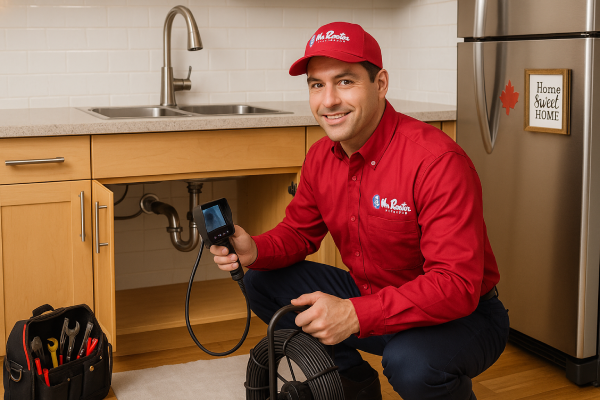
We show up on time, treat your home with care, and offer upfront, flat-rate pricing for every service or repair.
Contact your local Mr. Rooter team today to schedule service or learn more about how we can help protect your home’s plumbing system.
This article is intended for general guidance only and is not applicable to every situation. You are responsible for determining the proper course of action for your property and situation. Mr. Rooter is not responsible for any damages that occur as a result of advice and/or guidance derived from its blog content. Some Mr. Rooter services vary by location. Contact your local Mr. Rooter franchise for more information.
FAQs About Home Plumbing Systems
Mr. Rooter Plumbing is a one-stop solution for all your plumbing service needs. Whether you need a pipe repaired, clogs cleared, or drains cleaned, you can count on our experienced team to get the job done right! Our commitment to exceptional service includes answering your questions. Here are answers to some of your most frequently asked questions about home plumbing.
What are the main parts of a home plumbing system?
Home plumbing systems in Canada typically include supply lines, drainage pipes, venting, and fixtures, such as taps and toilets. Key components also include shutoff valves, P-traps, and vent pipes—all working together to safely and efficiently move water in and out.
How does water flow through plumbing lines?
Water flows into your home under pressure and exits through gravity-fed drainage. Clean water enters through the main plumbing line and travels to fixtures via pressurised supply lines. After use, wastewater flows down the drain pipes and out through the main drain line.
What comes through pipes besides water?
Besides water, plumbing lines may carry:
- Minerals: Common in Canadian homes with hard water (e.g., calcium, magnesium)
- Sediment or rust: Often from older plumbing or municipal repairs
- Air: Causes sputtering taps or noisy pipes, especially after a water shutoff
- Treatment additives: Chlorine, chloramine, or other additives from municipal water systems
These elements aren't usually harmful, but they can affect water quality and appliance performance. In-home filters and soft water systems can help ensure pure water throughout your home.
How does drainage plumbing work?
Drainage plumbing removes wastewater using gravity and venting. In a DWV (drain-waste-vent) system, drain pipes carry used water away, P-traps block sewer gas, and vent pipes ensure airflow. All waste exits through the main drain line into a sewer or septic system.
When should I call a plumbing professional?
Call a professional plumber when you notice issues like:
- Slow or frequently clogged drains
- Low or fluctuating water pressure
- Gurgling sounds or sewer odours
- Water stains, leaks, or moisture where it shouldn’t be
Your local Mr. Rooter professionals can diagnose the issue and prevent more costly damage.

